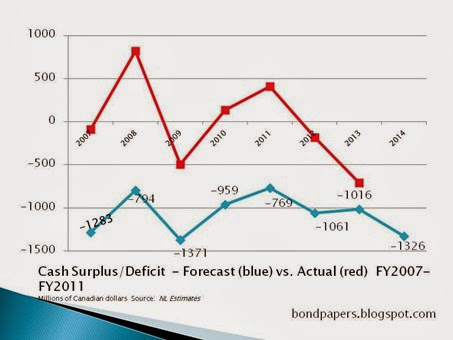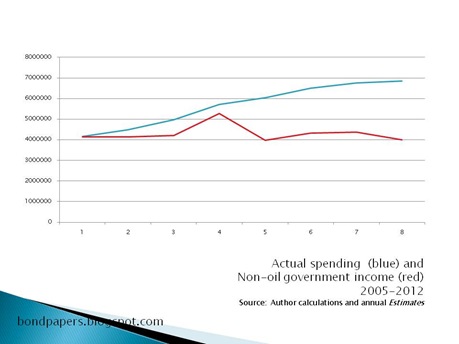On the outside, the spring budget for 2014 looks like a delicious assortment of goodies for everyone. You can tell it is delectable because everyone is shouting for joy and drooling over their good fortune.
There is not a single group who have had their hands out for government money that did not get something. And they are telling anyone who will listen just how happy they are.
Once you bite into one of sweetmeats in the Conservative Quality Assortment budget, though, the result might be a wee bit less tasteful.
Oh sure, politically, the thing is going to make lots of people very happy in the short-run. Sure it looks like an election budget, but the truth is, this is – as we told you already this week – a standard Conservative response to bad polls.
Anthrax Ripple
They did the same thing in 2005 after the disastrous drop in the polls that followed Danny Williams’ 2004 Christmas message of layoffs and spending cuts. We can say that Danny Williams owned that one because he decided it pretty much alone. Before Williams appeared on television to tell everyone the arse was out of ‘er, only those of his inner circle – like Tom Marshall – had heard any talk of the drastic measures Williams announced. Most of caucus and a goodly chunk of Williams’ cabinet heard about it when they watch Williams on television.
Down the Conservatives went in the polls. Those are the quarterly CRA numbers in the chart, above Out came the war with Ottawa to boost them back up again, and then in 2005 spring budget, the Conservatives opened up the spending taps. The only thing the Conservatives couldn’t find money for in the 2005 budget was a cancer centre in a district represented by a Liberal member of the House of Assembly.
By the end of 2006, Williams had consolidated his hold on the caucus and cabinet. With Loyola Sullivan gone in December 2006, Williams appointed one of his inner circle to run finance. To get a sense of just how much the 2014 budget is typical of Conservative budgets since 2005, just look at the ones that Tom Marshall presented himself, as finance minister, or had a huge hand in writing.
Ram’s Bladder Cup: The Marshall Legacy
The chart below shows the total cash surplus or deficit from the Estimates. These are not the numbers the Conservatives typically use but they are the ones they started using again in 2007, Tom became finance minister.
The Estimates show the cover the spending by the government directly on the basis of the cash the government will receive and spend in a given year. If there’s a deficit, it means the government has to borrow to make the books balance.
What you can see very simply is that in every single year since 2007, the provincial Conservatives planned to spend more money than they expected to take in.
The results were different – in other words they got a surplus – in three of those years. They got a surplus largely because of things beyond their control. Take 2008 as a case in point. That was the year of the recession, but it was also the year oil prices skyrocketed way beyond anything anyone could imagine. It was hard to avoid a surplus that year.
But note that the Conservatives planned to run massive deficits, just as Loyola Sullivan had said they would. "We're going to have significantly more [debt] over the next number of years," then-finance minister Sullivan told CBC in 2005. "We're going to have [a] $14-, $15- $16-, maybe $17-billion debt before we stop this. So, it's a huge problem. Our problem is still growing."
If you add up all those forecast deficits you get something around $8.6 billion. On top of the $11 billion public debt in 2007, then the Conservatives would have right on track to hit Sullivan’s forecast. Thankfully, oil prices intervened to save the people of Newfoundland and Labrador. Unfortunately, though, the Conservatives had another plan for massive public debt, called Muskrat Falls, that will actually add about $8.0 to $10 billion to the total that the people of the province will owe.
Spring Surprise: the Structural Problem Gets Worse
As much as the 2014 budget continues the Conservative budget policy of deficits and debt, that isn’t the most troublesome feature of the government’s spending plans.
The provincial government is taking in more money than any government in Newfoundland and Labrador history and at the same time is spending more per person to deliver services than any government in Canada. And for all that he government still plans to borrow more than $1.0 billion to balance the books.
But that not the part you should be most concerned about.
The steel springs piercing your cheeks would be the structural problem that remains at the heart of all this spending.
The 2014 budget estimates that the provincial government will collect about $6.5 billion in revenue. Oil and mining revenue - one time cash from liquidated assets – accounts for 37% of that. Those non-renewable revenues account for 40% of the provincial government’s own revenues; that’s what you get if we take about $660 million in federal transfers out of that $6.5 billion.
This is the heart of the government’s unsustainable spending as SRBP described it last April. The blue line in the chart below is the annual government spending from 2005 to 2012. The red line is the government revenue from everything except oil and mining royalties. The gap in between is spending that the government couldn’t sustain if it didn’t have assets like oil and minerals to convert to cash.

Once those assets run out, the provincial government is going to have to find some way to replace that cash. There are plenty of ways to do that. One of the most reliable ways would be to create a sovereign wealth fund, a fund that would invest some of the oil and minerals cash in order to make more money.
Norway has made trillions from its fund by investing cash overseas that would guarantee an average return each year. In the SIDI simulation, SRBP’s investment fund generated a total of $526 million over six years using an assumed average rate of return.
Since 2006, the provincial Conservatives have spent about $17.7 billion in revenue from non-renewable resources.
-srbp-